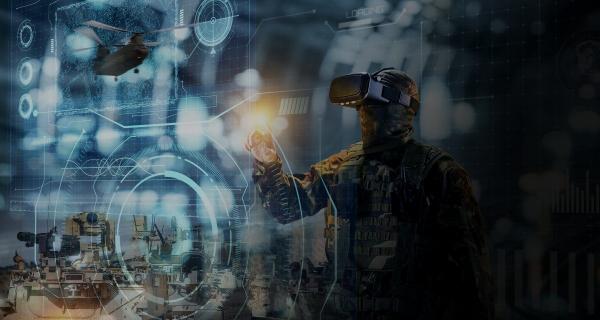Analysis of ChatGPT's military potential
As ChatGPT raises the importance of AI, experts are equally concerned about the military applications of AI.
In mid-February 2023, representatives from fifty countries attended the summit in The Hague, Netherlands, and although the theme was to discuss military drones and killer robots, among them the U.S. Department of Defense proposed international cooperation on AI military applications. Among them, it was emphasized that we should be careful about AI's misjudgment of strategy to avoid accidental escalation of conflict.

Analysis of the military potential of ChatGPT
1. Battle Spaces Autonomy
Using real battlefield sensors or information from similar perception sources, ChatGPT can be trained to achieve the following results:
- Order Control: Analyze information to provide commanders with improved decision making, order issuance, and control in battlefield space.
- Planning and Coordination: Generate battle plans and coordinate battlefield space control system operations to enhance the efficiency of combat operations.
- Scenario investigation: Generate scenario collection and reconnaissance information to enhance the battlefield commander's decision making capability.
- Target identification and tracking: Effectively identify and track battlefield space targets to improve battlefield space control accuracy and effectiveness.
- Risk Assessment: Conduct risk assessment for different operations in the battlefield space to ensure force safety.
2. Intelligence analysis
ChatGPT can be applied to intelligence reports and other relevant public text databases, using items such as automatically generating summaries of information contained in reports or identifying key information that may not be immediately apparent, distinguishing between text summaries:
- Text Summaries: Analysis of large amounts of publicly available textual material (news and media, etc.) allows for brief summaries of information that can be used to quickly identify key information in the data versus expected operational dynamics.
- Named Entity Recognition (NER): Extracts named entities of interest from publicly available text, mainly names of people, places, organizations, and proper nouns, etc., which can be used to understand the data in more detail and identify key people and locations.
- Language translation: Translating the opposing language into the native language can be used to analyze text data in different languages and improve understanding of the overall operation.
- Potential Threat Analysis: Predict future scenarios. Can be used to identify potential threats and opportunities and provide decision makers with the right information.
- Weather Forecasting: Provides accurate weather forecasts for operational areas to ensure military operations are carried out.
- Terrain Analysis: Uses terrain imagery and film to identify roads, buildings, and natural barriers, which can be used to plan routes and identify the location of potential adversaries.
3. Logistics-oriented analysis
The logistics supplies can be effectively and precisely controlled by using inventory management, etc., so that the right place, the right quality, and the right amount of supplies can be delivered to the required location:
- Inventory management: Analyze textual information (orders, shipping orders and inventory lists) and extract relevant inventory information to ensure the baseline amount of inventory and effective supply of supplies.
- Transportation optimization: Analyze the text data (dispatch list, etc.) to capture the supply route, transportation time and cost, so that the transportation route can be the shortest distance and the least time, and improve the efficiency of transportation and supply.
- Maintenance inbound: Analyze text data (inbound data, etc.) to collect relevant maintenance inbound data, plan inbound schedule, and ensure proper equipment.
- Supply chain management: Analyze purchase orders or supplier information to collect relevant supply chain information in order to identify supply failures or take timely remedial measures.
- Risk control: Analyze weather forecast and other information to collect information on potential risks to avoid supply interruptions.
4. Logistic self-drive carriage
The effectiveness of self-driving ChatGPT in delivering supplies depends on the accuracy and quantity of data collected. In addition, the use of ChatGPT by self-driving vehicles may raise safety and reliability issues. If solved, applications such as voice control could be used:
- Voice control: ChatGPT can be trained to understand and reflect voice commands to control vehicle navigation, indoor temperature control, and other functions.
- Text-to-speech conversion: ChatGPT converts text generated by the car computer into speech to respond to voice commands.
- Natural language understanding: ChatGPT is trained to understand natural language input and convert it into manipulable commands so that the self-driving car can understand complex human language input.
- Chatbot interface: ChatGPT uses human questions to provide valid information and suggestions or to perform related tasks.
- Pre-, mid-, and post-drive checks: ChatGPT can be trained to conduct pre-, mid-, and post-drive checks to ensure that the vehicle is self-checking its equipment.
【Artificial Intelligence】●Advanced tips for using ChatGPT-4
銆怤etwork Security銆戔棌9 popular malicious Chrome extensions
銆怰esources銆戔棌The Achilles heel of AI startups: no shortage of money, but a lack of training data
銆怬pen Source Intelligence銆戔棌5 Hacking Forums Accessible by Web Browsers
銆怤ews銆戔棌Access control giant hit by ransom attack, NATO, Alibaba, Thales and others affected
【Web Intelligence Monitoring】●Advantages of open source intelligence
【Dark Web】●5 Awesome Dark Web Links



